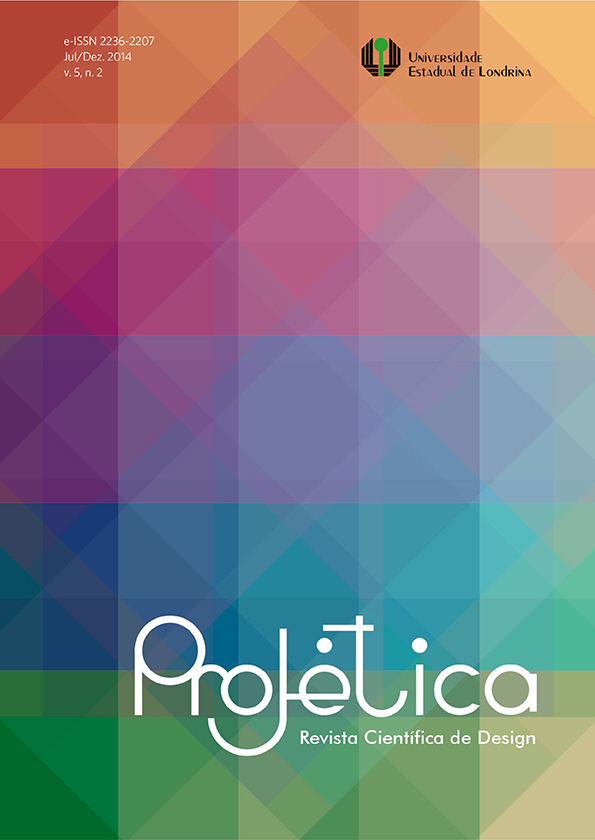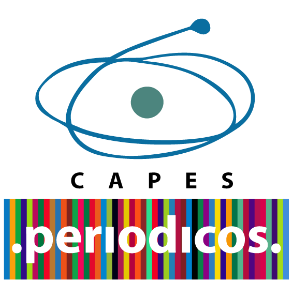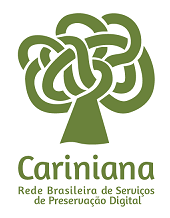Typography and low vision: a discussion of readability
DOI:
https://doi.org/10.5433/2236-2207.2014v5n2p33Keywords:
Typography. Low vision. Legibility. AccessibilityAbstract
This article presents the results of a survey on recommendations of readability for people with low vision. The methodological procedures corresponded to the literature review followed by semi-structured interviews with three people disabilities with low vision at different levels. A legibility test formatted with six typefaces in four size variations text was also conducted. The results of this phase of the research it was found that advice on legibility, identified in the literature review, are consistent with the perception of respondents, indicating the Arial font, with regular weight as the most readable to the audience in question.Downloads
References
BARRAGA, Natalie (1985) - falta ref. BONATTI, Fernanda Alves da Silva. Design para deficientes visuais: proposta que agrega videomagnificação a uma prancha de leitura. 2009. 189 f. Tese (Doutorado em Design e Arquitetura) – Faculdade de Arquitetura e Urbanismo da Universidade de São Paulo - FAUUSP, São Paulo, 2009. Disponível em: http://www.teses.usp.br/teses/disponiveis/16/16134/tde-27042010-102513/fr.php. Acesso em: 4 jun. 2014.
BRASIL. Decreto n. 5.296 de 02 de Dezembro de 2004. Regulamenta as Leis nos 10.048, de 8 de novembro de 2000, que dá prioridade de atendimento às pessoas que especifica, e 10.098, de 19 de dezembro de 2000, que estabelece normas gerais e critérios básicos para a promoção da acessibilidade das pessoas portadoras de deficiência ou com mobilidade reduzida, e dá outras providências. Disponível em: http://www010.dataprev.gov.br/sislex/paginas/23/2004/5296.htm. Acesso em: 9 jun. 2014.
IBGE. Censo demográfico 2010. Disponível em: http://www.ibge.gov.br/censo/TH. Acesso em: 4 abr. 2014.
FARIAS, Priscila Lena. Tipografia digital: o impacto das novas tecnologias. 4. ed. Teresópolis: 2AB, 2013.
FONTOURA, Antônio M.; FUKUSHIMA, Naotake. Vade-mécum de tipografia. Curitiba: Insight, 2012.
FUNDAÇÃO DORINA NOWILL PARA CEGOS. Deficiência visual. Disponível em: http://www.fundacaodorina.org.br/deficienciavisual/. Acesso em: 4 abr. 2014.
INSTITUTO BENJAMIN CONSTANT. Galeria de imagens. Disponível em: http://www.ibc.gov.br/?itemid=89. Acesso e: 4 abr. 2014.
JURY, David. O que é a tipografia? São Paulo: Editorial Gustavo Gilli, 2007.
KUNZ, Willi. Tipografía macro y micro estética. México: Gustavo Gili, 2004.
Downloads
Published
How to Cite
Issue
Section
License
Projética está licenciada sob a Creative Commons Attribution CC-BY 4.0 International. Os autores detém os direitos autorais e concedem à revista o direito de exclusividade de primeira publicação.
Os autores dos trabalhos aprovados autorizam Projética a, após a publicação, ceder seu conteúdo para reprodução em indexadores de conteúdo, bibliotecas virtuais e similares.
Os autores assumem que os textos submetidos à publicação são de sua criação original, responsabilizando-se inteiramente por seu conteúdo em caso de eventual impugnação por parte de terceiros. As opiniões emitidas pelos autores dos artigos são de sua exclusiva responsabilidade.
A revista se reserva o direito de efetuar, nos originais, alterações de ordem normativa, ortográfica e gramatical, com vistas a manter o padrão culto da língua e a credibilidade do veículo. Respeitará, no entanto, o estilo de escrever dos autores. Alterações, correções ou sugestões de ordem conceitual serão encaminhadas aos autores, quando necessário. Nesses casos, os artigos, depois de adequados, deverão ser submetidos a nova apreciação. As provas finais não serão encaminhadas aos autores.











